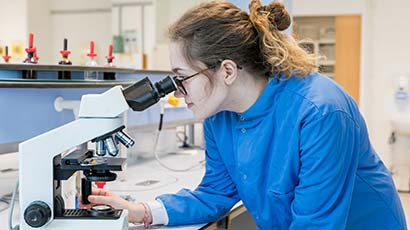Point-of-use device for rapid detection of boar taint in pig meat
Intellectual property available for licensing
Innovation
UWE Bristol has developed sensing technology to enable the quick and easy detection of boar taint compounds in the meat of male pigs. This device be used in abattoirs and will increase retailer confidence and the cost effectiveness of pig meat production.
The problem
Boar taint is an offensive smell and taste of meat that derives from approximately 20% of male pigs. Presently, there are no rapid, point-of-use tests for detecting boar taint in abattoirs. As a result, there can be significant wastage and loss of consumer confidence due to boar taint which can lead to significant financial loss by the industry.
Castration has been adopted as an approach to the problem of boar taint. (Boar taint arises from a biological mechanism that involves a hormone, androstenone, which is produced in the testes of pigs.) Nearly a third of European pigs in 2020 were surgically castrated. While several EU countries are adopting anaesthesia in castration to various degrees, the practice still raises concerns on animal welfare grounds and places significant resource demands. Vaccination (immuno-castration) is another option but has not been significantly adopted in the EU and also has attendant concerns of consumer confidence.
The pork market in the UK and Europe
Approximately 236 million pigs in the EU and 11.2 million in UK were slaughtered in 2022. The EU and UK ranked as the first and fifth largest exporters of pork, respectively, in the world.
Intellectual property available for licensing
Patents and know-how for dual biosensors and an accompanying electronic device for the simultaneous, direct measurement of boar taint compounds in situ in animal carcasses.
Partnerships
We are seeking commercial partners with expertise in sensors and instrumentation to exploit this technology.
Patents
- EP2966441B1, a granted patent, relates to the rapid detection of chemical compounds associated with boar taint by a dual sensor. This patent is live in the UK and thirteen major pig meat producing European countries.
- WO2021/151943 relates to the electronic elements of the detection device and is pending in the European Patent Office (EP21702260.7) and the US Patent Office (US17/794524).
Know-how
The UWE Bristol team has several decades of experience of sensor technology and meat science.
Publication
Biosensor and Bioelectronic 2020;150; 111837: Westmacott et.al. Novel, rapid, low-cost screen-printed (bio)sensors for the direct analysis of boar taint compounds androstenone and skatole in porcine adipose tissue: Comparison with a high-resolution gas chromatographic method.
Funding
We would like to acknowledge JSR Genetics, the Agricultural and Horticultural Development Board and the UK Research Councils who have funded the research underpinning this technology.
Contact
For more information please get in touch with the Intellectual Property team at ipteam@uwe.ac.uk.
You may also be interested in

Research
Discover how research at UWE Bristol is making a real impact.

Knowledge Transfer Partnerships
If your business has a strategy for growth, we can help make your ambitions a reality with a Knowledge Transfer Partnership (KTP).

Partnership PhDs
Transform your business with a partnership PhD. Applied, cutting-edge research, specific to your organisation and co-funded by UWE Bristol.
